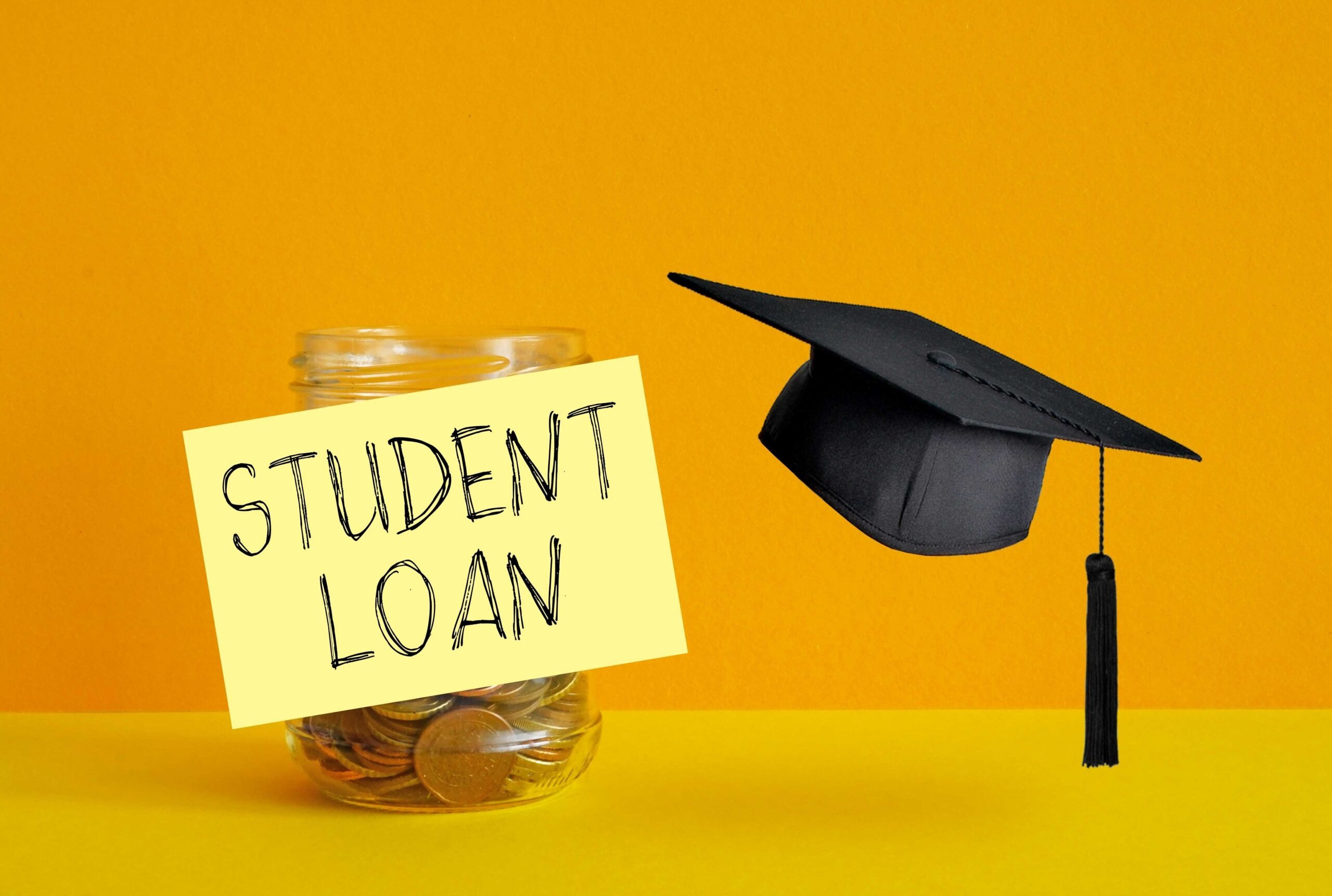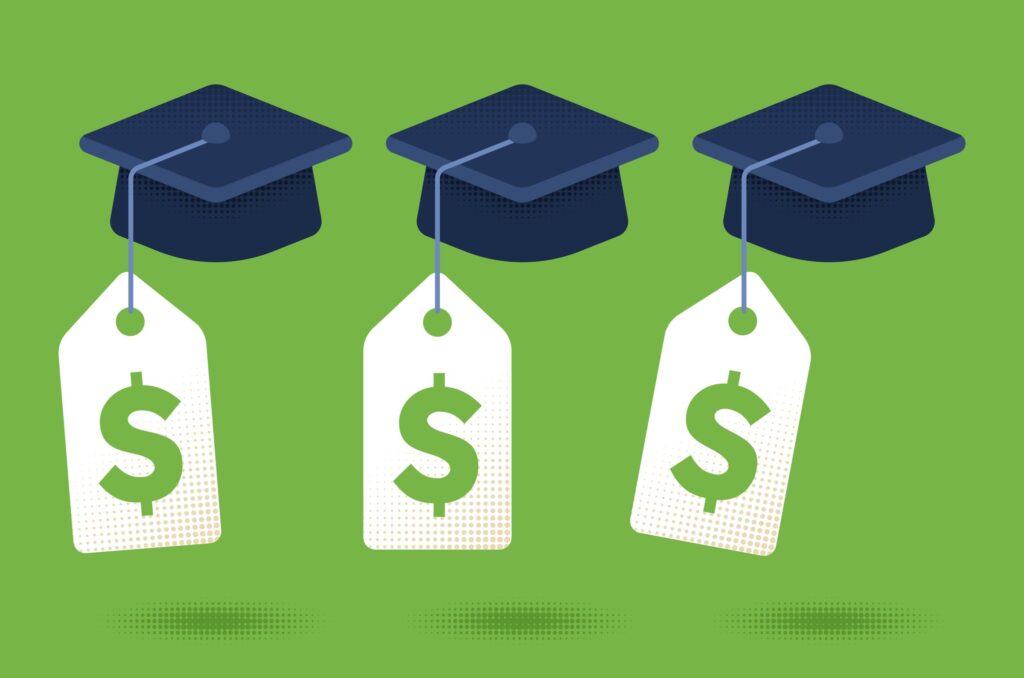
Table of Contents
Understanding the Different Types of Student Loans
Federal vs. Private: What’s the Big Difference?
When embarking on the journey of financing your education, one of the primary decisions you will face is whether to apply for federal or private student loans. Federal student loans are issued by the government, providing some inherent benefits that make them an attractive option for most borrowers.
They generally offer lower interest rates compared to private loans, along with more flexible repayment options and built-in protections such as deferment and forbearance, which allow borrowers to temporarily pause payments without penalty under specific circumstances. Moreover, federal loans typically do not require a credit check, thus being accessible to a broader range of students.
Conversely, private student loans are offered by banks, credit unions, and other financial institutions. These loans often require a good credit score and a reliable income, which can exclude many college students who may not yet have established credit histories. Interest rates on private loans are generally higher, and they can be variable, meaning your payment might fluctuate over time.
Additionally, private lenders tend to offer fewer repayment options; many do not provide forgiveness programs or deferment options like federal loans do. Therefore, students and parents must weigh these distinctions carefully, considering their individual financial circumstances and future earning potential when deciding on student loan options.
Direct Loans and PLUS Loans: Who Benefits from Each?

Source: vox.com
Direct Loans, often referred to as Stafford Loans, are the most common form of federal student loans. They come in two varieties: subsidized and unsubsidized. Subsidized loans, available to students with demonstrated financial need, do not accrue interest while the borrower is in school at least half-time, during periods of deferment, and through a grace period after graduation.
Unsubsidized loans, on the other hand, accrue interest from the time of disbursement with no requirement for payment until the student graduates or drops below half-time status.
PLUS Loans, or Parent Loans for Undergraduate Students, are federally backed loans available to parents of dependent undergraduate students. They are designed to help bridge the gap between other forms of financial aid and the total cost of education.
One of the main differences is that PLUS Loans require a credit check—applicants with adverse credit history may have limited options. However, these loans often provide a higher borrowing limit making them suitable for families looking to cover remaining educational expenses.
Borrowers should evaluate why they need a loan, as Direct Loans might better serve those who qualify under their financial circumstances, while parents who can manage the burden of a PLUS Loan might find them advantageous for college funding.
Student Loan Terms: Decoding the Jargon
Understanding the terminology associated with student loans can be as daunting as navigating the application process itself. Key terms include “interest rate,” “principal,” “grace period,” and “default.”
The interest rate refers to the cost of borrowing money, expressed as a percentage of the principal—the actual amount borrowed. A grace period is the timeframe during which a borrower is not required to make payments, typically six months after graduation for federal student loans.
Default occurs when a borrower fails to make required payments for an extended period, which can lead to serious financial repercussions, including damaged credit scores and legal actions.
Another important term is “loan servicer,” which is the company that manages the loan repayment process, including collecting payments and providing customer service. It’s essential to know who your loan servicer is, as they can provide significant assistance with any issues regarding your payments.
In addition, familiarizing oneself with the term “forbearance” is crucial; it represents a temporary pause on payments, often granted for financial hardship, but interest may continue to accrue. Understanding these terms can empower borrowers to make informed decisions about their finances and student loan repayment strategies.
Mastering the Application Process Like a Pro

Source: newsweek.com
Filling Out the FAFSA: Tips and Tricks for Success
The Free Application for Federal Student Aid (FAFSA) is an essential tool for students seeking financial aid for college, and mastering this process can significantly impact your financial support during your academic journey.
To begin, it’s important to gather all necessary documents, such as your Social Security number, tax returns, and bank statements, ahead of time to avoid delays. Additionally, students should create an FSA ID to sign the FAFSA electronically, streamlining the application process and ensuring your information is submitted promptly.
While completing the FAFSA, it’s vital to provide accurate information and avoid common pitfalls like incorrect Social Security numbers or reporting estimated income rather than actual figures. Be mindful of deadlines; federal financial aid has strict submission dates, while state aid and institutional aid may have different timelines.
Applying early can also increase the chances of receiving more substantial aid, as many colleges award funds on a first-come, first-served basis. Lastly, don’t hesitate to seek guidance from financial aid offices or online resources to clarify any complex sections; taking the time to ensure your FAFSA is completed correctly can pay dividends in securing funds for your education.
Managing Deadlines: Don’t Let Opportunity Slip Away
Deadlines are crucial in the world of student loans and financial aid, and missing them can significantly impact your educational plans. Each state and institution may have varying deadlines for applying for financial aid, and awareness of these dates can mean the difference between receiving adequate aid or facing financial strain.
The federal FAFSA can typically be submitted as early as October 1 for the upcoming academic year, but many colleges require the FAFSA by their specific deadlines, which may be earlier than federal deadlines.
Utilizing a planner or digital calendar to track deadlines can help you stay organized and ensure all applications are submitted promptly. Additionally, it’s beneficial to check in with your school’s financial aid office regularly.
They can provide updated information about deadlines, available scholarships, and any additional documents that may need to be submitted. By actively managing deadlines and communicating with the relevant offices, students can alleviate much of the anxiety surrounding financial aid processes, ensuring they capitalize on every opportunity available.
Additional Financial Aid: Grants, Scholarships, and Work-Study

Source: morecollegemoney.com
Exploring alternative financial aid options can supplement student loans and reduce the overall amount needed to borrow. Grants are a form of financial aid that typically do not need to be repaid and can include federal and state programs or institutional grants offered by colleges. The Pell Grant, for example, provides need-based financial support to undergraduate students, which can be a valuable resource for those from low-income families.
Scholarships also represent a crucial opportunity for students to secure funding. Unlike student loans, scholarships do not require repayment and are often awarded based on merit—such as academic performance, athletic ability, or artistic talent.
Many organizations, including schools, businesses, and non-profits, offer scholarships, and a diligent search can uncover dozens or hundreds of options, providing varying amounts of financial support.
Lastly, federal work-study programs allow students to work part-time while attending school, helping to cover educational expenses and potentially reducing reliance on loans. Through these programs, students can gain work experience, develop critical skills, and earn money for tuition or living expenses. Investigating and applying for these additional financial aid resources is crucial for any student looking to minimize their student loan debt.
Repayment Strategies: Taming Your Loan Beast

Source: takesalary.com
Consolidation vs. Refinancing: Which Path to Choose?
As graduates transition into the workforce and begin repaying their loans, understanding the strategies available for managing these debts becomes pivotal. Two common options are loan consolidation and refinancing.
Student loan consolidation, particularly federal consolidation, involves combining multiple federal loans into a single loan with one monthly payment, often extending the repayment term. This can simplify payment management, but borrowers should be wary of potentially losing certain borrower benefits, such as discounts or access to income-driven repayment plans available on some original loans.
On the other hand, refinancing involves procuring a new private loan to pay off existing student loans, potentially lowering monthly payments and interest rates if the borrower qualifies based on their credit score. Refinancing can ease the financial burden, particularly for graduates who have secured stable income, but it comes with risks.
Specifically, refinancing federal loans into private loans forfeits protections like income-driven repayment plans and loan forgiveness benefits. Borrowers must evaluate their financial circumstances, future earning potential, and the long-term implications of their decisions before proceeding with either strategy.
Income-Driven Repayment Plans: Are They Right for You?

Source: britannica.com
Income-driven repayment (IDR) plans offer a lifeline to borrowers struggling to make standard loan payments. These plans adjust monthly payments based on a borrower’s income and family size, making student loans more manageable. The four primary IDR plans include Revised Pay As You Earn (REPAYE), Pay As You Earn (PAYE), Income-Based Repayment (IBR), and Income-Contingent Repayment (ICR), each with unique characteristics and eligibility requirements.
One of the significant advantages of IDR plans is the potential for loan forgiveness under certain conditions. For instance, after 20 or 25 years of qualifying payments, any remaining balance can be forgiven, providing a path to financial relief for many borrowers.
However, one must be cautious when entering IDR plans, as longer repayment terms can lead to paying more interest over time. It’s imperative to assess your career trajectory and earning potential, as these factors can affect how beneficial an IDR plan may be.
For some, pursuing a high-income career could allow for aggressive repayment strategies, while others might find IDR plans crucial for maintaining financial stability during challenging economic periods.
Forgiveness Programs: Unlocking Potential Financial Freedom
For many borrowers, student loan forgiveness represents the ultimate financial achievement—a way to relieve the burden of debt after years of dedication to their education. The most prominent federal forgiveness program is Public Service Loan Forgiveness (PSLF), designed to reward borrowers who commit to serving in qualifying public service positions for at least ten years while making consistent, on-time payments under a qualifying repayment plan. However, this program has strict eligibility criteria and requires verifiable employment in qualifying roles, often leading to confusion among applicants regarding their status.
Beyond PSLF, there are various other forgiveness options available depending on specific career fields, such as teaching, nursing, and law enforcement. Additionally, the Teacher Loan Forgiveness program offers incentives for teachers who work in low-income schools, while the National Health Service Corps (NHSC) offers loan repayment for healthcare professionals in underserved areas.
It’s critical for borrowers to explore these options and stay informed about legislative changes that may impact forgiveness eligibility. Researching and understanding the intricacies of these programs can lead to significant financial relief and ultimately unlock greater economic freedom for borrowers.
Smart Financial Habits for Long-Term Success
Budgeting for the Future: Building a Healthy Financial Life
Developing sound financial habits is vital for long-term success, particularly when repaying student loans. Creating a comprehensive budget is one of the best ways to gain control over your finances. A budget helps track income, expenses, and debt payments, allowing borrowers to allocate resources effectively while ensuring they meet their monthly obligations.
Several budgeting methods exist, including the 50/30/20 rule, which allocates 50% of income to needs, 30% to wants, and 20% towards savings and debt repayment. This approach can offer a balanced way of managing finances without sacrificing all discretionary spending.
In addition, it is imperative for borrowers to routinely review their budget and adjust as necessary when income fluctuates or new expenses arise. For those with student loans, setting up automatic payments may help manage monthly obligations while potentially qualifying for interest rate discounts.
Furthermore, establishing an emergency fund can also provide a safety net for unexpected expenses, reducing the need to rely on high-interest credit cards or additional loans in times of financial strain. By incorporating these financial practices into daily life, individuals can develop a more resilient financial future and avoid falling into debt traps.
Credit Scores & Student Loans: How They Are Interconnected

Source: banklandmark.com
Your credit score plays a critical role in financial well-being, impacting your ability to secure loans, credit cards, and even housing. Student loans contribute to your credit history and can either positively or negatively affect your score based on how you manage repayments.
Timely payments can enhance your credit profile, especially in establishing a strong credit history. Conversely, missed or late payments can substantially harm your credit score, complicating matters when it comes time to make significant purchases, such as a home or vehicle.
Understanding how student loans and credit scores interconnect also informs strategies on managing debt effectively. Utilizing tools such as credit monitoring services can help borrowers stay updated on their credit status and understand what influences changes in their scores.
Moreover, ensuring that all debts remain within 30% of the credit limit is prudent, demonstrating responsible credit use. For those holding multiple loans, making extra payments towards high-interest loans can also lower your overall debt load and improve your credit profile over time. By prioritizing credit management, borrowers can ensure they are in a strong position for future financial opportunities.
Staying Informed: Resources for Ongoing Education about Loan Management
In today’s rapidly changing financial landscape, staying informed about student loans and financial management is imperative for borrowers navigating their paths to financial freedom. Various resources are available, including government websites such as the U.S. Department of Education, which provides comprehensive information on student loans, federal repayment plans, and eligibility for forgiveness programs. Additionally, online platforms like the National Student Loan Data System (NSLDS) allow borrowers to review their loan details, including balances and repayment history.
Nonprofit organizations and financial literacy programs offer workshops and resources on budgeting, credit management, and loan repayment strategies. Engaging with these resources can empower borrowers, providing the knowledge necessary to make informed decisions and effectively manage their education-related debt.
Furthermore, joining online forums or communities can facilitate peer support for students and recent graduates facing similar challenges, fostering an environment of shared knowledge and experiences. Ultimately, making an effort to stay informed is an excellent investment in your financial future.







